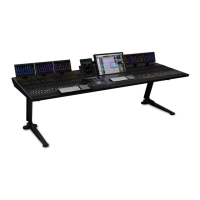Page 2 of 11
Eddie Jones / Mike Freitas 9329-65762-00 REV A 09/16 Avid©2016
Introduction
The S6 is an audio mixing control surface that requires a fast and reliable connection to the controlled
DAWs. Ethernet was chosen because of its performance, flexibility and easily available hardware.
Although the S6 uses common protocols for its networking, this doesn’t mean that it can be treated just
like an office network. Running applications that use high bandwidth (such as Audio over Ethernet, Avid
ISIS etc.), open a large number of ports, or use QoS (Quality of Service) can make the S6 behave
erratically. Any temporary break in the Ethernet connection can cause the whole system to become
unreliable and require a full reboot.
Note about Default Routes
A computer uses a Default Route (IP address) to talk to other computers when it can’t find a location on
the local machine. For example, when a user requests a page from the Internet the computer doesn’t
know the requested address, so it looks for a Default Route to send the request out to. This usually is a
Router that is then connected to the Internet. Problems occur when a computer is connected to two
Routers; these will each give out a Default Route, and the computer then doesn’t know which one to
use. The S6 Master Module internal DHCP server does not give out a Default Route, allowing
workstations to connect to a Router using a second port without running into these issues. This
description is a little over simplified but it’s all that is needed to understand the following setups.
Recommended Routers
For single S6 systems, the internal DHCP server (port 2 on the Master Module) is recommended.
For dual operator or other installations that require a separate router, the
Cisco RV325 Dual Gigabit WAN
VPN Router has been tested and is recommended by Avid. A sign that an unsupported Router is not up
to handing out IP addresses to a large number of modules is that the Master Module takes longer to
connect to all the modules on S6 system power up (for example, modules staying red for a long time on
the Surface > Settings page). This can also lead to firmware update errors or, at the extreme, a damaged
module.

